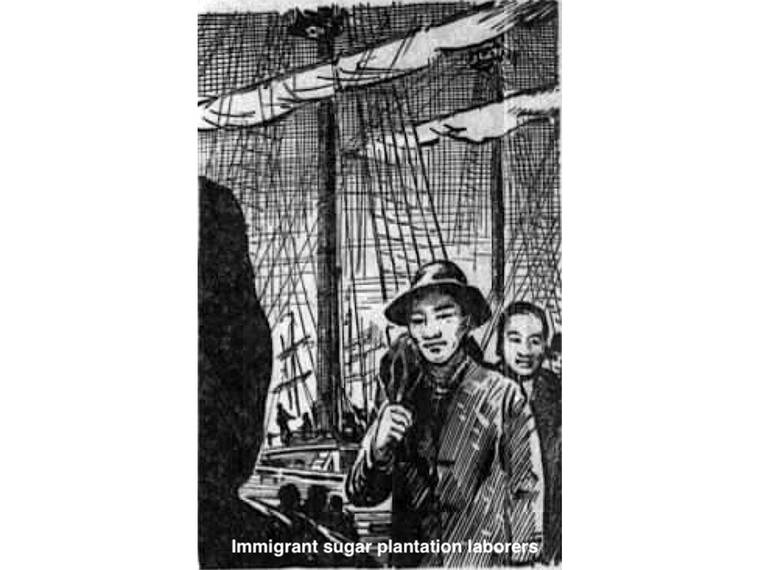Herewith is a brief historical account of the recruitment and importation of foreign laborers, some with wives and children, under contract to Hawaiian sugar plantations, which was first authorized by the Kingdom of Hawai‘i in 1850:
Chinese – In 1852, Captain John Cass of the British bark “Thetis” brought in 195 Chinese people under a special labor contract not to exceed five years. He delivered 98 more Chinese contract laborers in 1853. China proved to be the best source of Hawaiian labor between 1852 and 1885.
Japanese – In 1868, the first contingent of 148 Japanese sugar laborers was brought to Hawai‘i. A second company of 956 Japanese arrived in 1885. Japanese immigration continued until 1908, when Japan prohibited emigration of Japanese to Hawai‘i, the United States, Canada and Central and South America.
Pacific Islanders – From 1869 through 1884, limited numbers of Pacific Island laborers were introduced into Hawai‘i from Manihiki Atoll, Pukapuka Atoll, Vanuatu, Fiji, and New Zealand.
Portuguese – The first recruited group of Portuguese plantation workers arrived from Madeira in 1878. By 1899, total Portuguese immigration exceeded 12,000 persons.
Germans – From 1881 through 1885, about 1,000 Germans were imported to work on Hawai‘i’s sugar plantations.
Okinawans – The first Okinawan sugar contract laborers arrived in Hawai‘i in 1900.
Puerto Ricans – Between 1900 and 1909, some 5,000 Puerto Ricans were recruited as laborers for Hawaiian sugar plantations.
Koreans – In June, 1903, there were 505 Koreans in the Territory of Hawai‘i. During 1904 through 1905, this number increased to approximately 7,000. Korean contract sugar immigration ended in 1905.
Filipinos – In 1906, 15 Filipinos were brought to Hawai‘i by Albert Judd. Additional small groups arrived in 1907 and 1908. The first group of Filipinos, recruited as sugar laborers by the Hawai‘i Sugar Planters’ Association, arrived in the Territory of Hawai‘i in 1909. Between 1909 and 1934, some 118,000 Filipinos were processed into Hawai‘i. In 1946, about 6,000 more Filipino contract laborers were introduced.
Other nationalities – Other nationalities included small numbers of Norwegian, Italian, Austrian, Polish, Spanish, Black American, White American, Russian and Hindu Indian contract sugar laborers.






Ever wondered why people are bilingual ? More intelligent? Not really. I can easily fake it. I speak Italian also. English is my primary language.
Nice to know this. All speak different languages and working together.